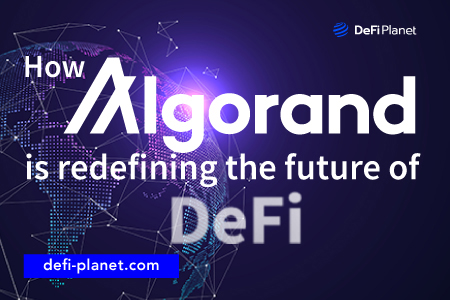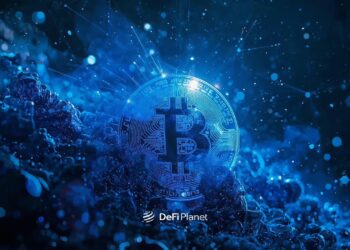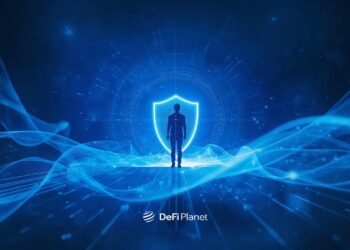Last updated on November 17th, 2022 at 02:20 pm
Decentralized Finance (DeFi), a blockchain-based form of finance that does not rely on a central authority, is rapidly evolving since it came into existence in 2018.
From the development of tokens, both fungible and non-fungible, to the building of applications and smart contracts, DeFi, according to DeFi Pulse, is estimated to have over 92 billion USD locked in it.
Algorand is a decentralized, open-source, and permissionless blockchain network that was launched in June 2019. This infrastructure was built with the aim of solving the three major challenges of the blockchain — decentralization, speed, and security.
Algorand was founded by Silvio Micali, a computer scientist, and MIT professor. Designed to be a network focused on rapid transaction rates, Algorand is also striving to achieve near-finality. Finality in this case means processing over a thousand transactions per second and reaching transaction finality in less than five seconds.
The Algorand blockchain network allows users to build just anything.
Algorand uses the Proof-of-Stake (PoS) consensus mechanism to validate transactions before new blocks are added to the blockchain. In return, validators are rewarded with the network’s native token — ALGO digital currency.
The Algorand network is capable of hosting decentralized applications (dApps) as well as scalability. As the cost of gas needed to process and validate transactions keeps rising DeFi traders and dApps developers have continued to look for alternatives. The Algorand blockchain network is one of these alternatives.
Developers now also use the Algorand Standard Asset (ASA) protocol to create new tokens and transfer existing ones to the Algorand ecosystem.
ALGO — the Algorand Native Cryptocurrency
ALGO is the native cryptocurrency of Algorand that governs and powers all activities on the network. Besides offering ALGO tokens as rewards to miners and validators who facilitate the validation of transactions, they are also usually split and distributed among all ALGO holders. This means holders of this digital currency are entitled to a certain percentage of annual percentage yield (APY).
In order to push staking projects on the Algorand network and fuel the decentralization drive, rewards are constantly distributed on the platform.
ALGO Tokenomics
With Algorand having a hard supply of about 10 billion ALGO coins, below is how the digital asset has been allocated:
- Over the first five years, 3 billion ALGO is estimated to be released.
- As part of rewards for node participation, 1.75 billion ALGO is estimated to be distributed.
- 2.5 billion ALGO will be distributed to relay nodes over a period of time.
- Algorand Foundation and Algorand Inc have a reward of 2.5 billion ALGO.
- 0.25 billion ALGO will be distributed as grants to end-users.
Uniques Features of Algorand
From smart contracts to the Algorand Standard Assets (ASA) and its Atomic transfers, the Algorand blockchain has some unique features.
The Algorand Smart Contract
The Algorand smart contracts (ASC1) is a trusted, seamless solution capable of automatically enforcing custom rules and logic. They are quick, scalable, and cost-effective.
Because these contracts are incorporated into the Algorand Layer 1, they exhibit the same speed, scale, finality, and security as the 111Algorand platform. This same incorporation makes them error-free and cost-effective.
The efficient and automating ability of the smart contract has created room for disruption in the global economy and the establishment of novel business models in various areas. This automation also allows for the execution of agreements, hence eliminating the need for third parties or escrow companies.
The smart contracts are developed in a new programming language called Transaction Execution Approval Language (TEAL), and PyTeal (a Python language binding) to enhance communication with the ASC1.
The Algorand Standard Assets (ASA)
As stated earlier, the Algorand Standard Assets (ASA) provides a standard Layer-1 mechanism for representing any form of assets be it fungible, non-fungible, restricted fungible, or restricted non-fungible. ASA aims to solve a number of challenges associated with digital assets which include access to global markets, difficulty in transferability, and real-time settlements.
Role-Based Asset Control
Role-Based Asset Control (RBAC) is a type of asset control mechanism that could be employed by issuers and managers to enhance business and meet compliance and regulatory needs. The RBAC is, however, optional. Some regulatory and compliance needs that can be sorted by the RBAC include individual asset account analysis, legal transference of assets, off-chain asset documentation, and prevention of spam assets.
Atomic transfers
The Atomic transfer feature provides a trusted pathway on the Layer 1 protocol to securely and simultaneously transfer a number of assets among specific parties. Once transactions are grouped together, all or none of the transactions are executed.
Algorand Wallet and its Features
The Algorand Wallet is a medium that enhances a fast, simple, secure, and official way to transact on the Algorand blockchain. Supported with many unique features, the wallet is also maintained by the team behind the Algorand protocol.
The Algorand wallet creates an easy-to-use interface for new and existing cryptocurrency holders to carry out transactions on the Algorand blockchain.
Some features of the Algorand wallet include:
Earn Algo rewards
Because the Algorand protocol itself ensures that every account that holds 1 ALGO or more is eligible to earn rewards, the Earn Algo reward feature of the wallet is where ALGO holders can claim rewards. Users automatically get incentivized by just holding ALGO tokens in their Algorand wallets.
It is important to note that the reward rate is set by the Algorand Foundation. Currently, this rate is pegged at approximately 7%. This means an Algorand wallet that holds 100,000 ALGO coins will get a yearly reward of 7,000 ALGOs.
Because the Algorand wallet is non-custodial, the ALGO reward may yield differently on platforms like Coinbase and Binance — which are custodial services that distribute rewards to their users based on their own terms and conditions.
Optional Security Enhancements
This feature has extra steps which Algorand wallet users can take to secure their wallets. These additional steps include pairing your ledger nano X and backing up your recovery passphrase.
Algorand-backed blockchain transaction
With this feature, users can send, receive, or HODL Algos and Algorand Standard Assets. This platform also helps users to link their Algorand wallets to other decentralized applications.
Real-time fiat converter
The real-time fiat conversion meter allows ALGO holders to see and know what their digital asset is worth in any local currency.
News feature
This feature allows users to stay in touch with the latest updates, developments, tools, and releases from the Algorand team.
App development
The Algorand wallet has an in-built TestNet support feature that allows developers to build and test applications, assets, smart contracts, and more.
Use Cases of Algorand
Algorand has many use cases and is practically employed in the supply chain, DeFi, security, finance, healthcare, environmental and other sectors of the global economy.
These organizations directly or indirectly use the Algorand blockchain in a number of ways.
Smart contracts
In order to eliminate the clumsy paperwork and inefficiencies associated with traditional contractual agreements where trusted third parties are often wanted to validate the fulfillment of terms outlined in an agreement, most organizations now adopt smart contract technology. Smart contracts automatically execute transactions using basic lines of code stored on the blockchain when agreement conditions are met.
It is believed that smart contracts built on first-generation blockchains come with a number of limitations such as being slow to propagate, high cost, and non-scalability.
The Algorand smart contract (ASC1) is said to be capable of eliminating all of these limitations. This explains why many players in the global economy are adopting this innovative network to enhance workflow, especially in the area of binding agreements.
Rekeying
Rekeying, a protocol built on Algorand’s Layer 1, enhances security and eliminates inefficiencies by allowing users to change private spending keys without changing their public address. This feature enhances security, continuity, and operational efficiency.
Rekeying has some special use cases. These include:
- Contract reassignment: In blockchain technology, the ownership of a contract can be seamlessly reassigned, especially in a large context. Algorand’s rekeying feature can facilitate this process without stress.
- Custody Providers: Custody providers such as Banks, Exchanges, Savings associations, Registered broker-dealers, and Futures commission merchants can leverage rekeying to keep their users spending keys cold at all times, preventing a chain of old public keys from moving funds after using the spending keys, onboarding large user bases for projects migrating from other blockchains to Algorand.
Atomic transfers
Algorand’s atomic transfer enhances the transfer of a number of assets among specific parties. This feature has a number of use cases such as:
- Simplifying debt settlement
- Easily matched funding
- Instantaneous settlement of complex multi-party / multi-asset transactions
- Enhanced multilateral trade
In Conclusion…
- Currently, DeFi is disrupting many sectors of the world economy, especially finance. Built on the Layer 1 infrastructure, Algorand brings a suite of unique features coupled with speed, decentralization, and easy usage to drive the inclusivity and accessibility of financial products.
- The Algorand smart contract and interoperability of the networks is surely redefining decentralized finance.





















